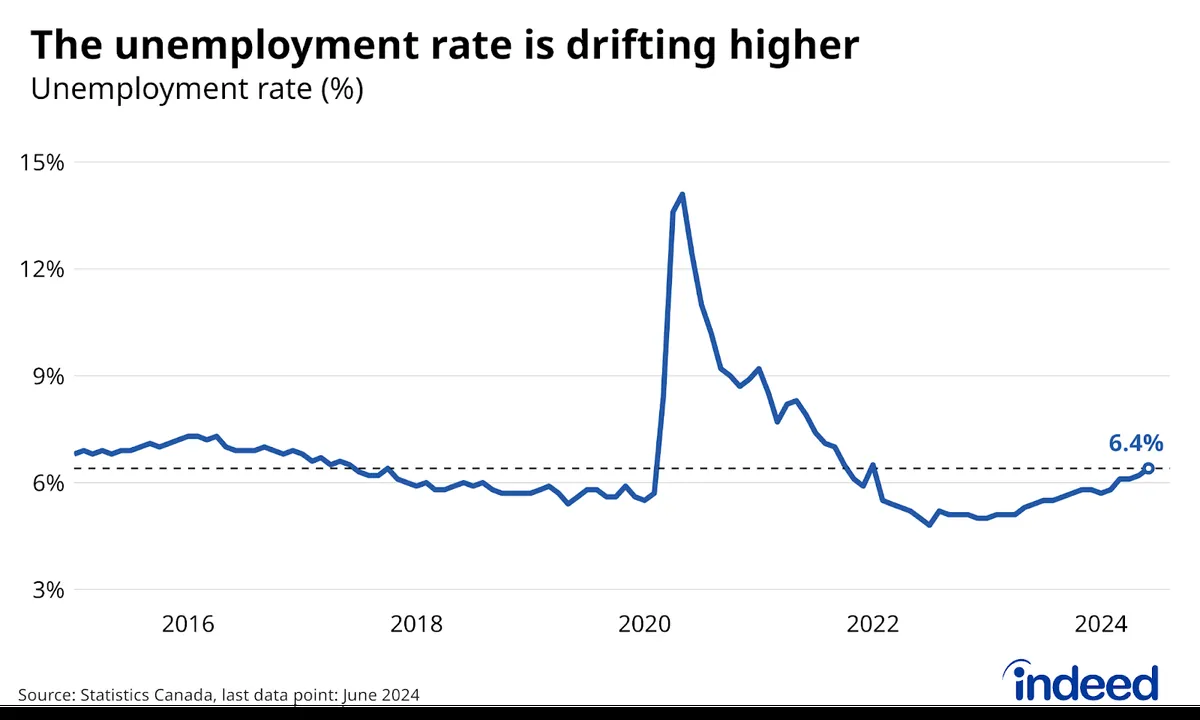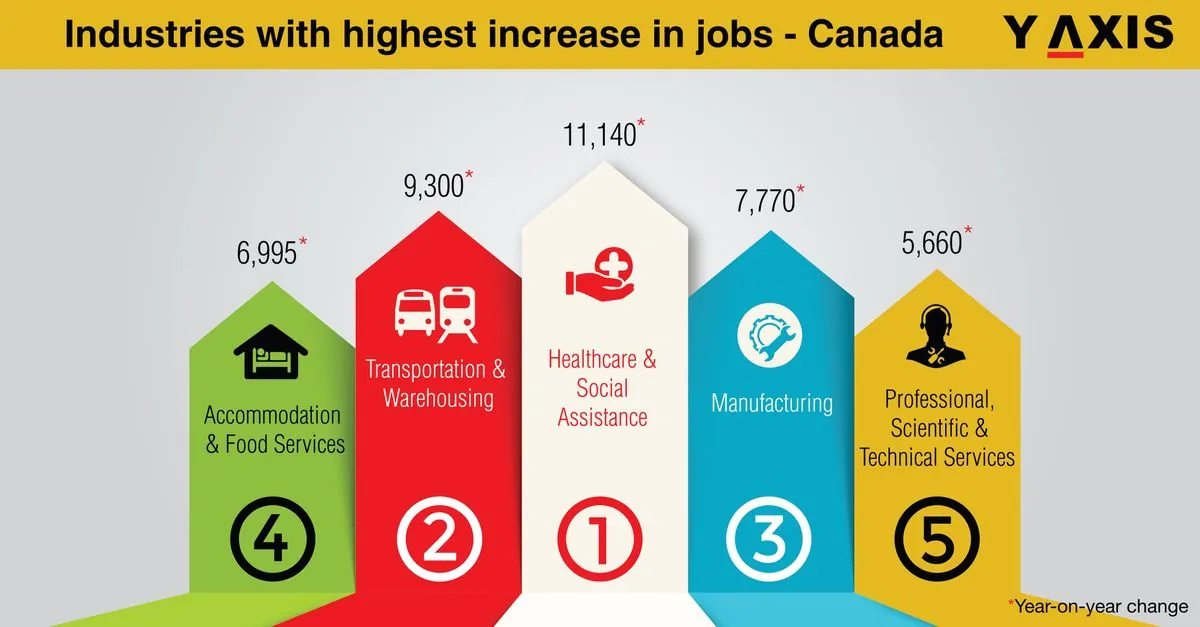Canada's Jobless Rate Hits 7-Year High, Signaling Economic Challenges
Canada's unemployment rate rose to 6.6% in August 2024, reaching a 7-year high outside pandemic years. Despite adding 22,100 jobs, the increase was below expectations, potentially influencing future interest rate decisions.

Canada's labor market faced challenges in August 2024, as the unemployment rate climbed to 6.6%, marking the highest level in over seven years, excluding the anomalous pandemic period of 2020-2021. This development has raised concerns about the country's economic health and potential policy responses.
According to data released by Statistics Canada on September 6, 2024, the economy added 22,100 jobs last month. However, this increase was primarily driven by part-time employment, falling short of analysts' predictions of 25,000 new positions. The rise in unemployment suggests a weakening labor market, despite Canada's historically strong employment performance compared to other developed nations.
The current situation reflects broader economic trends in Canada, the world's second-largest country by total area. With a diverse economy heavily reliant on international trade, Canada has been navigating global economic uncertainties. The service sector, which employs approximately 75% of Canadians, has been a significant contributor to employment trends.

The Bank of Canada, established in 1934 and responsible for the country's monetary policy, may need to reassess its approach in light of these developments. Experts suggest that the weaker-than-expected job market could influence future interest rate decisions. Andrew Grantham, Senior Economist at CIBC Capital Markets, commented on the situation:
"Canadian employment rebounded slightly following two soft months, but the job gain couldn't keep up with the pace of labour force growth and the jobless rate rose more than anticipated."
Grantham further noted that this report aligns with expectations of continued steady interest rate cuts from the Bank of Canada.
It's worth noting that Canada's labor force dynamics are complex, influenced by factors such as high immigration rates and shifting employment patterns. The country has one of the highest per-capita immigration rates globally, which contributes to labor force growth. Additionally, part-time work has been increasing as a proportion of total employment since the 1970s, a trend reflected in the latest job figures.
While the current unemployment rate is concerning, it's essential to consider Canada's economic resilience. As a member of the G7 and G20 economic groups, the country has weathered various economic challenges, including several recessions since World War II. The most recent recession occurred in 2020 due to the COVID-19 pandemic, from which the economy has been gradually recovering.
As Canada navigates these economic headwinds, policymakers will likely focus on strategies to stimulate job growth and maintain economic stability. The country's diverse economic sectors, including its significant natural resources industry and robust financial services centered in Toronto, may play crucial roles in future economic recovery efforts.


































